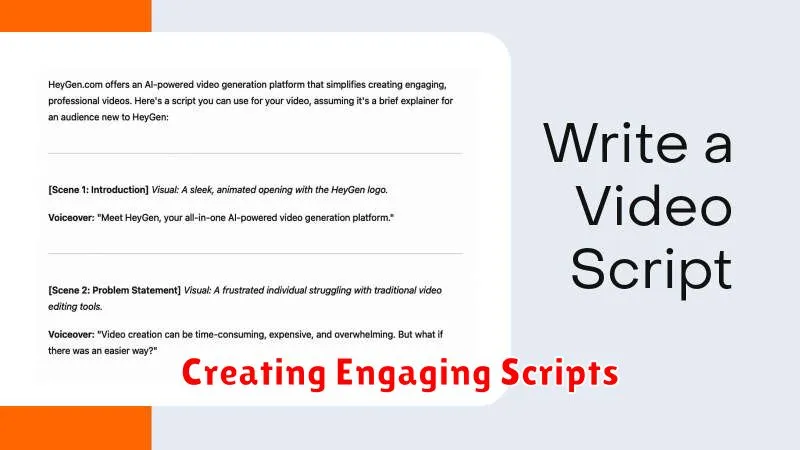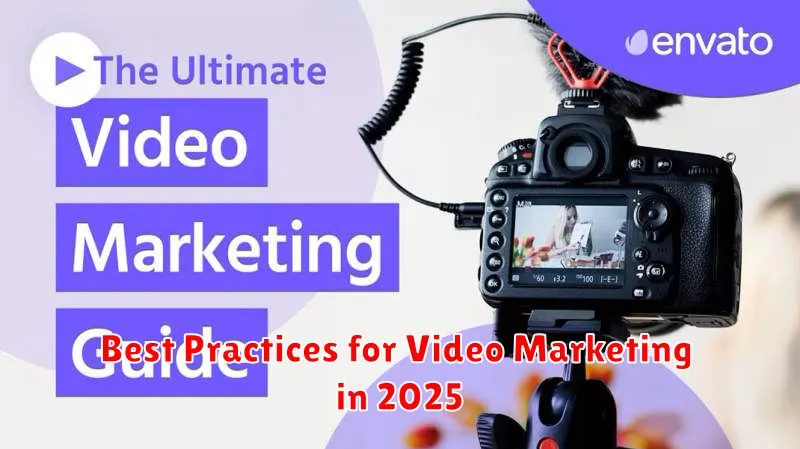Video marketing is no longer a futuristic concept; it’s a critical component of any successful marketing strategy in 2025. With the rise of short-form video content and the continued dominance of established platforms like YouTube, businesses must adapt to the evolving landscape to effectively reach their target audiences. This article delves into the best practices for video marketing in 2025, providing actionable insights to optimize your video content strategy for maximum impact. From understanding the latest trends in video consumption to mastering the art of video SEO and leveraging the power of influencer marketing, we’ll cover everything you need to know to stay ahead of the curve and achieve your marketing goals with video.
Whether you’re a seasoned video marketer or just starting out, understanding the core principles of successful video marketing is essential. This guide will equip you with the knowledge and tools necessary to create compelling video content that resonates with your audience, drives engagement, and ultimately boosts your bottom line. Explore the key elements of a winning video marketing strategy, including content planning, video production techniques, distribution strategies, and performance analysis, to ensure your videos achieve optimal reach and deliver measurable results in the dynamic world of digital marketing.
Why Video Content is Essential
In the evolving digital landscape of 2025, video content has become more than just a trend; it’s a necessity for effective marketing. Consumers are increasingly engaging with video across platforms, making it crucial for businesses to incorporate it into their strategies.
Video offers a dynamic way to connect with audiences on a deeper level. It allows for emotional storytelling, showcasing product features effectively, and building brand personality in a way that text and images simply cannot.
Increased engagement is a key benefit of video. Viewers retain more information from video content compared to written content. This translates to better brand recall and a higher likelihood of conversion.
Furthermore, video content contributes significantly to improved SEO. Search engines prioritize websites with rich media, and video can significantly boost your website’s visibility and ranking.
Choosing the Right Platform
Selecting the right platform is crucial for successful video marketing. Each platform caters to a different audience and content style. Consider your target demographic carefully. Where do they spend their time online?
For a professional audience, LinkedIn might be the most effective choice. If you’re targeting a younger demographic, TikTok or Instagram could be more suitable. YouTube remains a powerful platform for a broader reach and long-form content.
Key factors to consider include:
- Audience demographics: Age, interests, location.
- Content format: Short-form, long-form, live streams.
- Platform features: Advertising options, analytics, community engagement tools.
Don’t limit yourself to a single platform. A multi-platform approach can maximize your reach. Repurpose content to suit each platform’s specific requirements. For instance, a long-form YouTube video can be edited into shorter clips for TikTok or Instagram.
Creating Engaging Scripts

A compelling script is the backbone of any successful video. It dictates the narrative, guides the visuals, and ultimately determines whether your audience stays engaged. In 2025, capturing attention quickly is more crucial than ever. Start strong with a hook that grabs the viewer in the first few seconds. This could be a provocative question, a surprising statistic, or a compelling visual.
Keep it concise. Modern audiences have short attention spans. Deliver your message efficiently, cutting out any unnecessary jargon or fluff. Focus on clarity and conciseness.
Know your audience. Tailor your language and tone to resonate with your target demographic. Consider their interests, needs, and pain points. A script for Gen Z will differ drastically from one aimed at Baby Boomers.
Include a clear call to action. What do you want viewers to do after watching your video? Whether it’s visiting your website, subscribing to your channel, or making a purchase, make sure your call to action is clear, concise, and compelling.
Optimizing Videos for SEO

Optimizing your videos for search engines is crucial for maximizing visibility and reach. Keywords play a vital role in this process. Conduct thorough keyword research to identify relevant terms your target audience uses when searching for video content.
Video titles and descriptions are prime real estate for incorporating these keywords naturally. A compelling title grabs attention and accurately reflects the video’s content. A detailed description provides context and further incorporates relevant keywords, aiding search engines in understanding the subject matter.
Tags offer another avenue to enhance searchability. Use a mix of broad and specific tags related to your video’s theme and keywords. This helps categorize your content and increases its discoverability in search results.
Closed captions and transcripts not only improve accessibility but also provide searchable text for search engines, further boosting your video’s SEO performance. Ensure accurate captioning and transcription for optimal results.
Tracking Engagement and Views

Measuring the success of your video marketing campaigns is crucial. This involves closely monitoring key metrics to understand what resonates with your audience and what needs improvement.
Views are a fundamental metric, providing insight into your video’s reach. However, don’t stop there. Analyze watch time, which reveals how much of your video viewers are actually watching. A high drop-off rate may indicate issues with pacing or content relevance.
Engagement metrics go beyond views and watch time. Track likes, comments, and shares to gauge audience interaction. These actions signal viewer interest and satisfaction. Pay close attention to the click-through rate (CTR) if you’ve included calls to action within your videos. A high CTR indicates effective calls to action driving desired outcomes.
Utilize analytics platforms offered by hosting services like YouTube or Vimeo. These platforms provide detailed reports that allow you to effectively monitor and analyze your video performance. Regularly review your data and use it to refine your content strategy for future videos.

